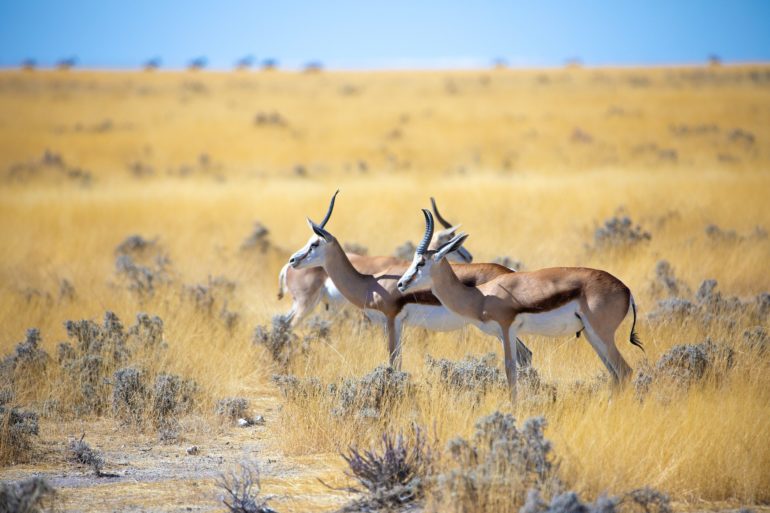Research led by a University of Wyoming graduate student involving about 50 scientists from across the globe has provided new insights into the behavior of ungulates (hoofed animals) as it relates to forage conditions and water availability.
Saeideh Esmaeili, who graduated from UW’s Program in Ecology in December 2020 and is now a postdoctoral assistant at Colorado State University, is the lead author of a paper that appears in the journal Ecology Letters. It explores the foraging behavior of 30 species of ungulates across North America, Europe, Africa and the Middle East, ranging from elk and mule deer in Wyoming to gazelles, impalas, reindeer, wildebeest, wild asses and zebras.
“By combining GPS relocations with remotely sensed data on forage characteristics and surface water, we quantified the effect of body size and digestive system in determining movements of 30 populations of ungulates,” Esmaeili says.
Other UW researchers who participated are Shannon Albeke, Jeff Beck, Jake Goheen, Matt Kauffman and Jerod Merkle, along with Hall Sawyer, of Laramie-based Western EcoSystems Technology Inc. Goheen was Esmaeili’s Ph.D. adviser.
The research adds nuance to a long-held hypothesis that ungulates choose to forage on grasses and other plants when the vegetation is at an intermediate stage of growth, so as to maximize energy intake. This is called the “forage maturation hypothesis.” Plants are most digestible at the beginning of the growing season; however, because they are small during this time, biomass is low. As plants mature, they gain biomass, but they become harder to digest.
The ungulates that were part of this study include both ruminants, such as deer and elk, which acquire nutrients by fermenting plants in a specialized stomach prior to digestion; and equids, such as horses and zebras, which don’t have such specialized stomachs.
Most notably, the scientists found that smaller-bodied ruminants forage primarily for the highest energy intake, while equids—which tend to be larger—choose to forage in areas close to surface water, with less attention to forage condition. That’s likely because equids don’t conserve water as efficiently as ruminants and proportionally excrete more water. The research also confirmed that ruminants’ ability to process higher-biomass forage increases with the species’ size.
A primary conclusion of the research is that, while the forage maturation hypothesis largely holds true, there is some variation based upon ungulates’ body size and digestive systems.
“The forage characteristics that influence population persistence of free-ranging ungulates should differ according to body size and digestive system, such that access to a combination of resource gradients is key to maintaining viable populations of diverse free-ranging ungulates across the globe,” the scientists conclude.
Study reveals impacts of climate change on migrating mule deer
More information:
Saeideh Esmaeili et al, Body size and digestive system shape resource selection by ungulates: A cross‐taxa test of the forage maturation hypothesis, Ecology Letters (2021). DOI: 10.1111/ele.13848
Provided by
University of Wyoming
Citation:
Body size, digestive systems shape ungulate foraging (2021, July 27)
retrieved 27 July 2021
from https://phys.org/news/2021-07-body-size-digestive-ungulate-foraging.html
This document is subject to copyright. Apart from any fair dealing for the purpose of private study or research, no
part may be reproduced without the written permission. The content is provided for information purposes only.
